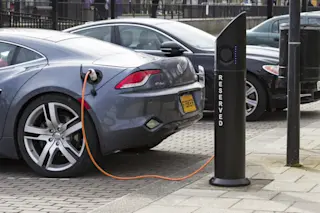High school and college engineers can do a lot with a lawn trimmer engine, bicycle wheels and a few wires—like build prototype cars that get in the thousands of miles per gallon. Here we bring you the best images from this weekend's Shell Eco-marathon Americas competition.
NEXT>
A Powerful Prototype
All weekend long, prototype cars built by students around the country and shipped down to Texas battled it out. They ran 10-lap races around the 0.6 course of city streets in downtown Houston, striving to be top dog in miles per gallon. The cars in the prototype division, like this one from Loyola-Marymount University, didn't have many of the luxuries of the normal cars driving by and wondering what was going on. But those normal cars also don't run at more than 1,000 miles per gallon, as many racers achieved. The winning team in the prototype category, from Universite Laval ...













